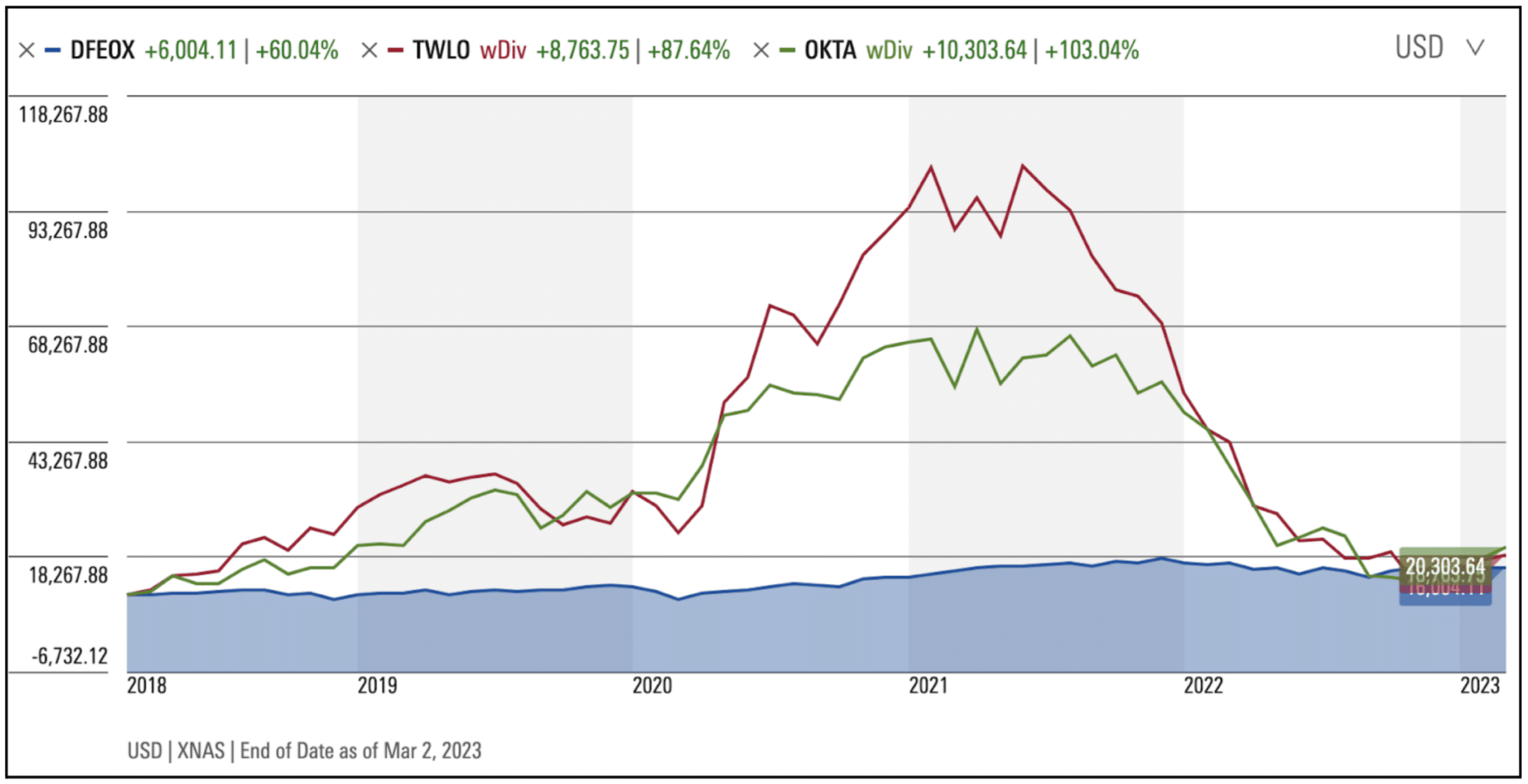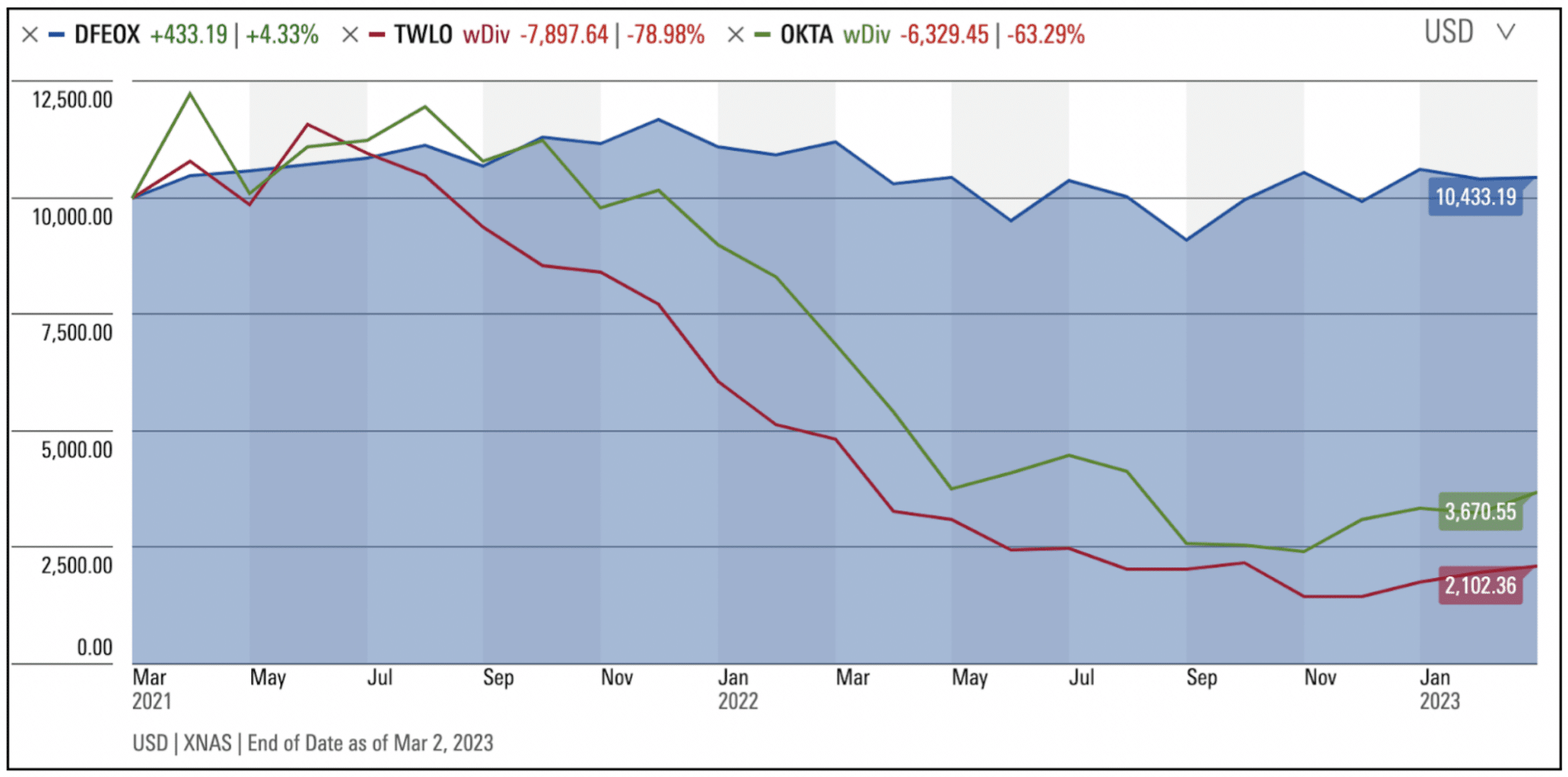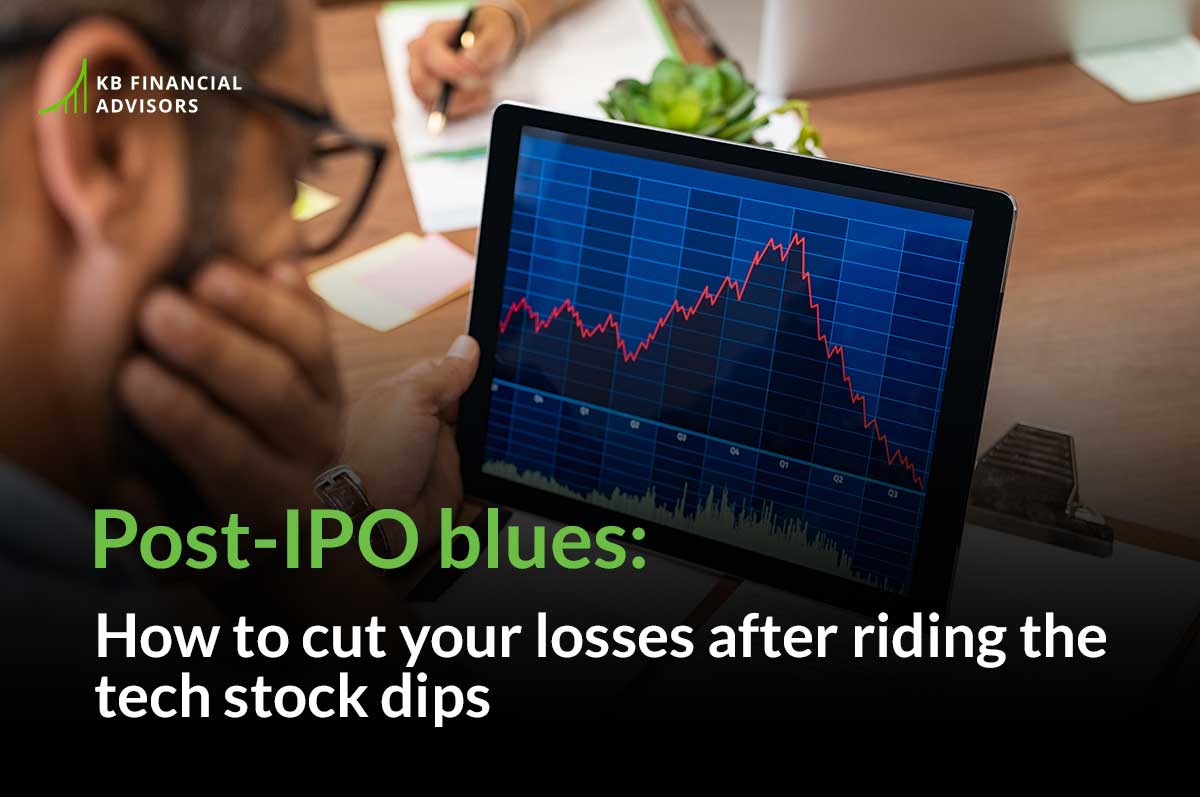You may have held onto your stock for too long but there’s still time to turn things around.
Going public is no easy feat. As a tech executive, you get so consumed by the IPO process that it feels impossible to pause and make a financial plan for what you’ll do after the bell rings.
If you’re a few years post-IPO, you’re all too familiar with the dramatic ups and downs tech stocks have gone through recently. When met with extreme volatility, it’s easy to go into freeze mode and just watch it go down.
If any of this is hitting home for you, you probably rode your stock as it plummeted from its 2021 high, and now you’re left with losses that likely exceed 75%.
Back in 2018, I wrote about how not acting after your IPO could cost you. Like a crystal ball, many of the concerns I outlined in that blog post manifested in 2022, including stocks reaching high highs before plummeting to low lows. Folks who didn’t sell when their stock was up are kicking themselves now that it’s crashed.
It’s easy to dwell on what you could’ve, would’ve, and should’ve done in the past, but what’s more effective is thinking about your plan for the future. Let’s discuss how you can cut through the worry and confusion, and gain clarity on your path forward.
A look at Twilio and Okta’s roller coaster rides
I used Twilio (TWLO) and Okta (OKTA) as examples when I wrote about this topic in 2018, and these stocks perfectly illustrate how much of a roller coaster ride tech stocks have been on this year.
Let’s compare Twilio and Okta to DFA US All Cap Core (DFEOX), a fund KB Financial Advisors uses in our clients’ portfolios. This comparison highlights the contrast between a concentrated position of one U.S. tech stock and a diversified portfolio that includes all U.S. stocks (not just tech stocks).
The chart below compares DFEOX, TWLO, and OKTA stocks’ performance from 2018 to present day.


DFEOX, TWLO, and OKTA stocks from 2018 to 2023
As you can see, these stocks hold almost the same value today that they did five years ago. If you had invested $10,000 in each of these stocks in 2018, today you’d have:
- $16,004 in DFEOX
- $18,764 in TWLO
- $20,304 in OKTA
Like they say, it’s about the journey, not the destination. That rings especially true when you compare the rides each one of these stocks endured since 2018. If you continue to hold almost all your investments in your tech company (like a Twilio or Okta), your ride is bound to be turbulent. In contrast, spreading your investments over a diversified portfolio, like DFEOX, generally means smooth sailing.
From 2018 to 2021, our clients from Twilio and Okta felt like they were being rewarded for holding onto their shares. It looked like their stock was going to the moon — they felt unstoppable. Things took a turn towards the end of 2021 and the start of 2022. TWLO and OKTA have been declining ever since and stockholders are left wondering where the fall will stop.
Given its volatile nature, investing in a single tech stock should come with a g-force warning, like the ones you see before riding a roller coaster: “Only get on this ride if you’re in good health, have a lot of money, and have the stomach to endure these losses.”
Now, comparing DFEOX, TWLO, and OKTA stocks’ performance from 2020 to present day, we see different results.

DFEOX, TWLO, and OKTA stocks from 2020 to 2023
TWLO and OKTA continued to have a dramatic ride, while DFEOX continued to experience smooth sailing.
If you had invested $10,000 in each of these stocks in March 2021, today you’d have:
- $10,433 in DFEOX
- $2,102 in TWLO
- $3,671 in OKTA
Our clients who diversified have more money now than they did in 2021. In contrast, our clients who didn’t want to sell their single tech stocks in 2021, and wishfully thought the stocks would go higher, have experienced significant losses.
“Ouch!” That’s all that comes to mind when I see the red and green lines in the above chart.
It reminds me of this one time I was playing fetch with my black lab. It was a beautiful day in the yard and we were having the best time. She grabbed the ball and ran towards me, but things went awry when she didn’t slow down and sprinted full force into my left leg. The crash hurt, in the same way holding onto a plummeting stock hurts.
So, how do we turn this pain around?
Managing concentrated stock
It’s easy to dwell on the regret of not selling in 2021 and to dread feeling stuck right now. Frankly, remorse sucks but it’s not too late for you to turn things around.
For starters, one way to manage concentrated stock is what I call a “floor and ceiling” approach. The name refers to the price at which we’ll start selling. You may be familiar with dollar-cost averaging with time as your determinator. This is an effective approach when you have a diversified portfolio with a smooth ride, however an unpredictable stock requires a different plan. The floor to ceiling approach is an active way of dollar-cost averaging out of the stock but using price — rather than time — as the determinator of when to sell. Here’s how it works:
Whenever the stock is going up — like in 2021 — it’s helpful for you to have a floor, or a price that’s lower than the stock’s current value. The floor determines how much of a loss you’re willing to endure before you start selling. This approach keeps you from holding onto falling stock for too long. Conversely, when the stock is down — like in 2022 — you’ll want to have a ceiling, or a target price that’s higher than the stock’s current value. The ceiling determines how much in gains from your stock’s current price will trigger a sale. The goal of the floor and ceiling approach is to obtain a higher average sales price.
It’s impossible to predict your stock’s future, but maintaining a floor and ceiling around a stock’s current price and selling when you reach either threshold creates a buffer between you and the stock’s volatility.
You’ll want to target the periods when your stock price keeps rising and sell when you reach your ceiling. As the stock price changes, you need to adjust your floor and ceiling prices. When the stock eventually starts falling down, you may stop selling for a period of time until you reach your floor, which you adjust based on the stock’s most recent high point. Ultimately, the floor keeps you from riding a massive drop, like the one in 2022.
One blind spot I’ve consistently noticed in my clients’ thinking, is when they only focus on the floor or the ceiling — they should determine both at any given time. Whenever a client’s stock is going up, their focus tends to shift to their ceiling price and they don’t acknowledge the reality of an eventual fall, neglecting a predetermined floor price. I’ve also seen the inverse of this flawed thinking during dips.
When you’re in the midst of a dip and you feel stuck — like today, in early 2023 — you need a ceiling. There’s nothing you can do about past losses, but what you can do is avoid repeating history. Get off the roller coaster before the big drop by taking the floor and ceiling approach.
Lesson learned. Let’s turn things around
I’m not here to sugarcoat anything or discount your loss. If you held onto a single tech stock past 2021, you’re in a difficult position right now.
Fortunately, I’ve worked with a lot of folks in your circumstance — including ones at Twilio and Okta — and I understand the pain and remorse you’re probably experiencing. After taking time to process and grieve your financial losses, the best thing you can do for yourself is to make an actionable plan to avoid feeling like this in the future. That’s the great thing about life: You don’t have to make the same mistake twice.
Let’s determine your floor and ceiling plan. Book a call today to start your redemption story.



